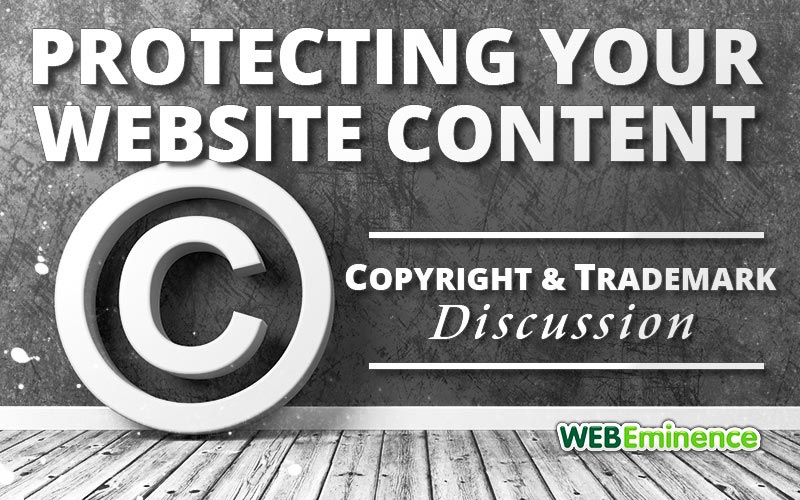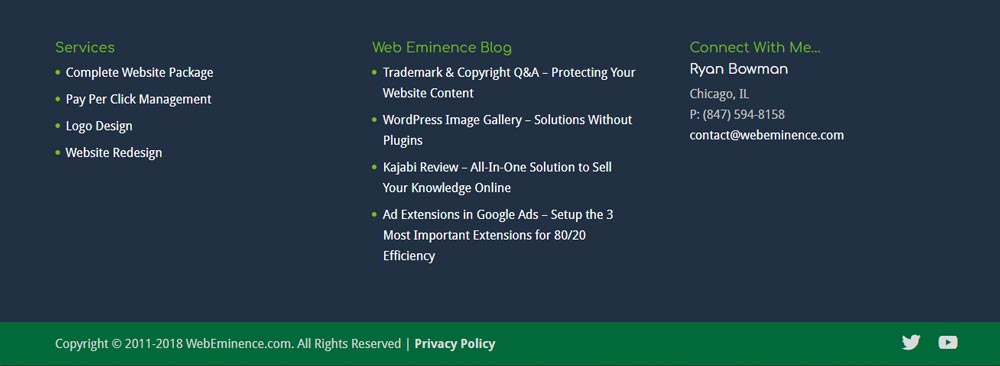
Legal Disclaimer: We are not lawyers and this is not legal advice. We did ask lawyers to answer these questions and then we summarized their answers below. We encourage you to contact your own lawyer to get legal advice on these matters but hope this helps you to gain knowledge as a starting point!
Q: I’ve designed my logo, and I think it is pretty awesome. I don’t want anyone else to copy or mimic it. What’s the best way to protect my brand?
A: Once you’ve selected a name and designed the logo for your company, you can use a trademark (or service mark) to protect your business interests. This restricts the use of your brand name by other entities. Trademarks identify and distinguish anything that can be characterized by any combination of words, phrases, symbols, and designs.
For example, if we search online we can find a trademark for PAYPAL registered by Paypal, Inc.. It’s simply the letters P-A-Y-P-A-L which protects the use of that word for business purposes.
The Las Vegas Convention and Visitors Authority has also trademarked the phrase “What Happens In Vegas Stays In Vegas“. I assume they won’t mind my using it here as an example!
To clarify, trademarks distinguish the source of goods while service marks refer to the source of services.
Typically, the term “trademark” is used to refer to both types of marks. Putting a trademark (the “™” symbol) next to your logo distinguishes it from all other logos. Plus it tells others that you are willing to prosecute any violators who use your mark.
SIMPLY: The ™ symbol lets others know you won’t be messed with. You mean business.
Q: What are some other benefits of registering my company name and logo with the U.S. Patent and Trademark Office?
A: While the U.S. Patent and Trademark Office doesn’t require you to register your trademark (going from ™ to ®), registering your name is beneficial because it allows you to:
- notify the public of your claim
- establish legal presumption of your ownership of the mark and corresponding exclusive rights take legal action with regards to the mark in federal court
- use the registration to get further registration in other countries
- list your mark in the U.S. Patent and Trademark Office database
- record your U.S. registration with the U.S. Customs and Border Protection Service to prevent imports of infringing goods
SIMPLY: It’s better to be safe than sorry. Consider registering your company name and logo as soon as possible to protect your business interests.
Q: What is the difference between TM and the R within the circle ®?
Anyone can use the TM sign on a logo or slogan. It is a notice of common-law rights claim in trademark. A TM typically is used in connection with an unregistered mark to inform potential infringers that a term, slogan, logo or other indicator is being claimed as a trademark. Use of the TM symbol does not guarantee that the owner’s mark will be protected under trademark laws.
The federal registration symbol, the R enclosed within a circle (®), may be used once the mark is actually registered in the U.S. Patent and Trademark Office. This guarantees the owner’s protection under trademark laws.
WARNING: Even though an application is pending, the registration symbol may not be used before the mark has actually become registered. The federal registration symbol should only be used on goods or services that are the subject of the federal trademark registration.
SIMPLY: (®) means that you’ve officially registered with U.S. Patent and Trademark Office.
Q: How do I protect the content on my website?
Your website is a valuable asset for marketing, sales, and customer service power and you should protect it just like you would your other business property. You can do that by copyrighting it. Your website is intellectual property.
SIMPLY: Copyright it.
Q: What can I Copyright on my website?
Copyright protection is only for original works fixed in a tangible means of expression. A website qualifies provided that the work is original, owned by the applicant, and is clearly described.
Copyright protection on a website is for all of the content on that site. The U.S. Copyright Office also says that content is “material that is perceptible to the users of a particular website.” This includes just about everything from news articles, literature, blogs, music, audio, and video.
SIMPLY: Anything that you put on your website.
Q: What can I NOT Copyright?
Links to other websites obviously bring people to other webpages so you cannot copyright them, although you can copyright internal links from one page to another on your site.
You can’t copyright work that’s in the public domain. Public domain is just a fancy term that means it is owned by no one. (An example of this might be a cooking recipe that has been passed down for generations. The works of Shakespeare and Beethoven are also public domain as they were created before copyright existed.)
User-generated content is content that users put on your websites, like comments and reviews. This content is owned by the users so they own the copyright to their own contributions.
You can’t copyright ideas, such as plans for future websites, or functional design elements. Nor can you copyright domain names, hypertext links, or the layout, format, or “look and feel” of a website. Common, frequently used/unoriginal material, such as icons or familiar symbols are not subject to copyright.
SIMPLY: You cannot copyright what others add to your website, the design of your website, or what doesn’t yet exist on your website.
Q: How can I Copyright my website?
Someone may have told you that you have automatic copyright protection the minute the website content is put up before the public, and that is true. However, you can also take additional steps to protect you content.
Put a copyright notice on every page of your website, including the year. The best way to do this is to have a footer on every page that reads, “Copyright [date] [company name]”. And be sure to update the year regularly. Some businesses include all the years of copyright protection, as in “Copyright 2010-2018 ABC Company”. I like to do this for older companies especially since it shows their longevity.

Register your copyright. You can do this easily with the U.S. Copyright Office. It should be registered under the category “other digital content”.
The copyright for a website and the trademarking for a brand or logo can be a bit complicated. You might want an attorney to help you.
Here are a few law offices that could help:
Law Offices of Mark E. Wiemelt, P.C.
Patent Trademark Copyright
Phone: 312-372-7664
www.wiemeltlaw.com/trademark.html
Wilson & Associates
Attorneys at Law
Phone: 847-490-5360
www.intproplaw.net
Q. What if you choose not to register the Copyright on your website?
Your website is ever-changing. You’re probably adding content to it all the time so you might not want to register the copyright. You’ll still be protected by putting the copyright notice on your website.
SIMPLY: It is not “required.” However, be sure to keep the year on the copyright notice up to date and make sure it shows on all pages.
Q. How do I protect my domain name?
Be sure your business owns not only its website content, including graphics and images but your domain name as well. Here are a couple of helpful posts from Web Eminence on this topic:
Domain Name Recovery
Who Owns My Website
A domain name is a unique identifier on the web. It appears like “www.webeminence.(extension)”, such as “www.webeminence.com”.
A domain name is unique and exclusive to one party. So no one else can purchase it once you have. When you register your domain name, you get an exclusive name.
But domain names can be very similar and only differ on the extensions. For example, there might be “webeminence.com”, “webeminence.net”, “webeminence.biz”, or “webeminence.info”.
It is best to buy the domain name (URL) from a reputable domain registration service, but keep in mind that only buying the “.com” extension leaves the others open to be taken by someone else. Someone else could potentially buy “YourBusinessName.biz” and start drawing potential customers away from you. If you’re worried about that, it may be worth the investment to buy some of the other extensions for your chosen domain name.
Check out my video here on searching and buying a domain on GoDaddy. It will work similarly on other popular domain registrars.
SIMPLY: If you really want to protect your domain name, you will want to also buy some or all of the most common extensions from a domain registration service then have them forwarded to your main domain name.
Once you’ve taken care of the suggestions above, your can lay your head down at night knowing you did everything to protect what you’ve worked so hard to create.
If you have further questions, we are more than happy to address and answer those. Please feel free to add any questions you have by commenting below. If you’re a lawyer and would like to add to this discussion, please do so below in the comments.
Look forward to hearing from you!
